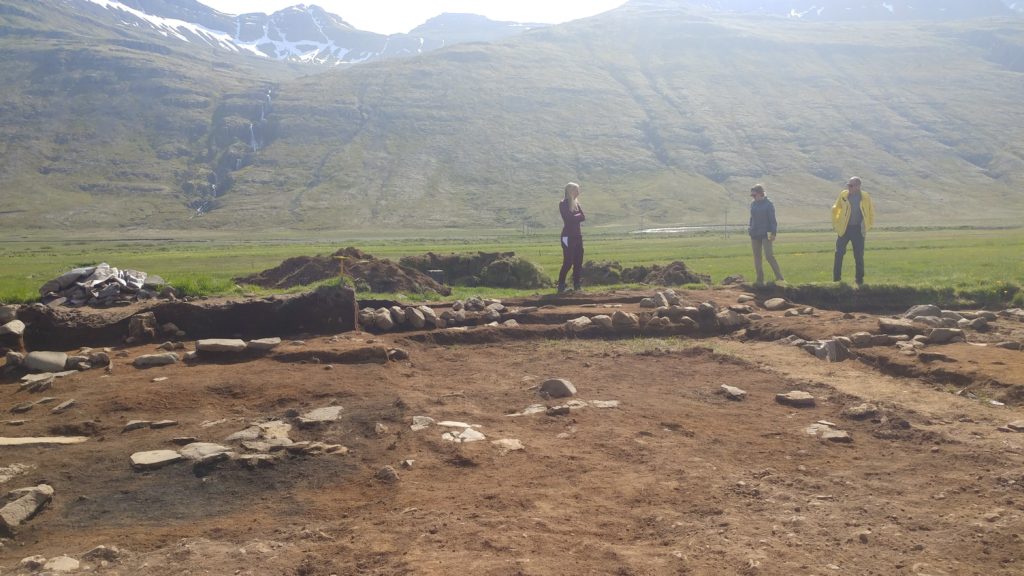
Image credit Kellan Steele.
In 2014 Kristin Muterspaw and Charlie Peck were working with Bjarki Borgþórsson at the site of a house foundation on the Skalanes peninsula that dates to circa 1300 CE. While examining the dig site we identified the fire pit through the charred soil layer, and nearby the house floor layer through the large quantities of lanolin still present. We were in Iceland taking soil samples from a variety of contexts, including archaeological sites, glacier margins, and avian nesting grounds and performing soil parameter and 16S rRNA extraction and analysis on them. While marveling at the seeming “freshness” of the floor layer we started talking about the possibility for extracting contemporaneous DNA from the soil samples, aka ancient DNA or aDNA. We knew little about even what would be required to do the sampling and analysis correctly (we were geeks that had just learned how to do 16S sampling and analysis) so when we sobered-up we put the idea on the shelf.
In 2017 the biologist Emmett Smith joined our group and has lead our effort in this area since. We have taken sterile samples at Stod, shipped, extracted, and analyzed the DNA. We have developed some support for dating fragments to the earliest days of Icelandic settlement, circa 900 CE. Among the species Identified in the settlement samples are DNA segments unique to cranberry and henbane, two crops that the Norse were known to cultivate and which are not native to Iceland.